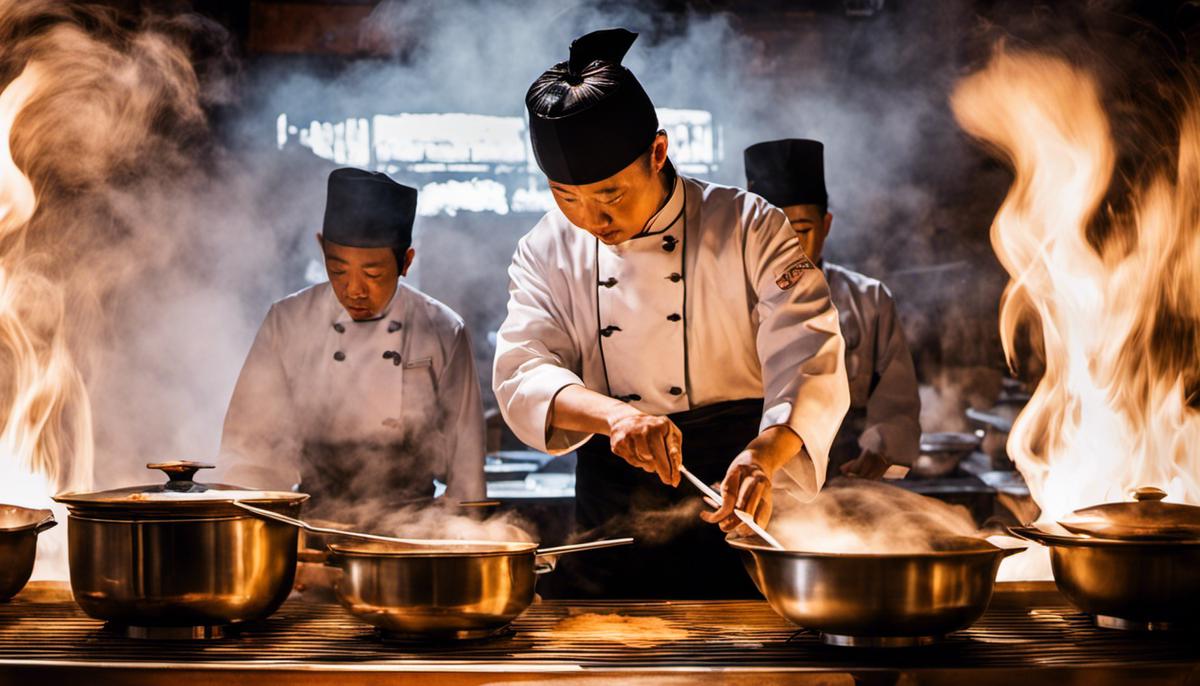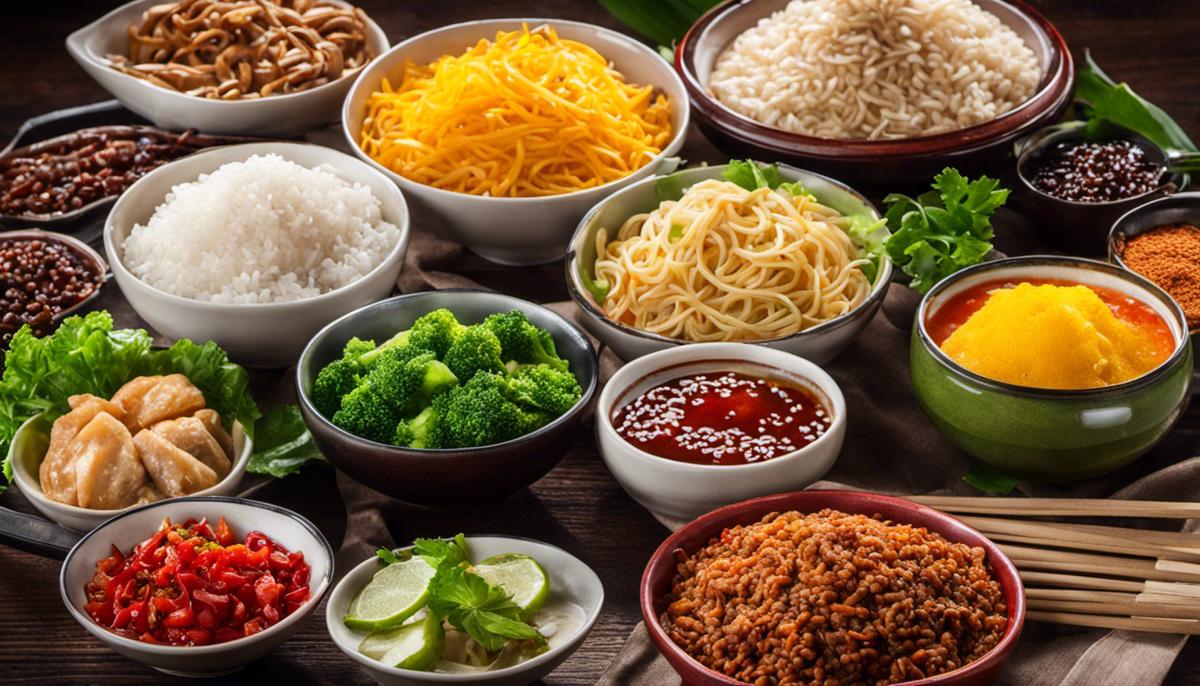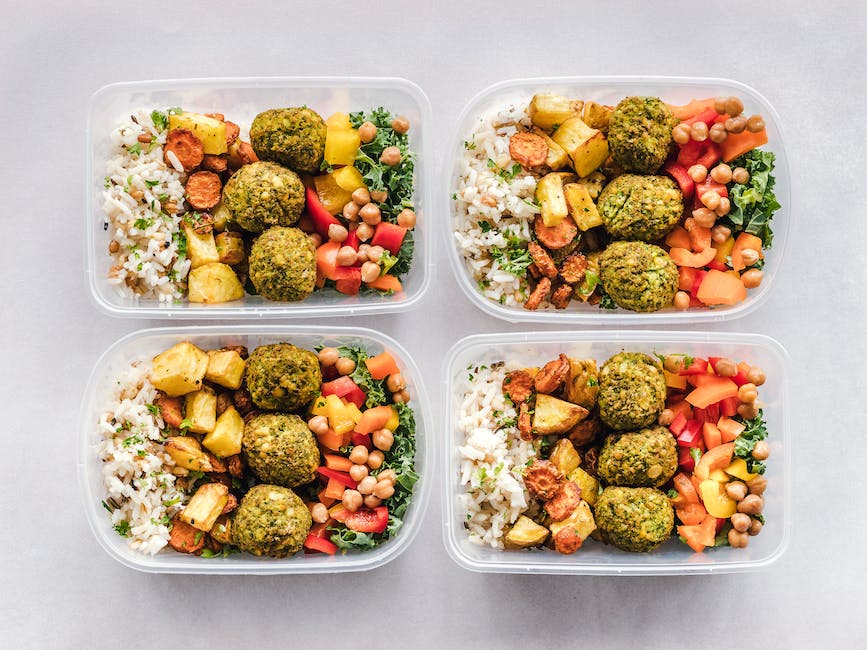Chinese cuisine, renowned for its complexity, variety, and balance of flavors, is immensely celebrated world-wide. Delving into the realm of Chinese cooking may seem daunting to many, but with an understanding of the basics, anyone can master the craft. Begin by acquiring an understanding of standard Chinese cooking techniques, such as stir-frying, steaming, and braising which underpin most traditional recipes. Learn about the indispensable tool of a Chinese kitchen – the wok, the optimal oils for cooking at high temperatures, and the right way to chop ingredients. Grasp the criticality of proportionate cooking times to maintain the fresh, crisp textures of the dishes. Finally, contemplate the actual art of cooking Chinese food, where most ingredients have a unique role in achieving that harmony of flavors that make your tastebuds dance.
Basic Chinese Cooking Techniques
Understanding Chinese Cooking Techniques
To master the essentials of Chinese cooking, begin by learning the three main techniques: stir-frying, steaming, and braising. Stir-frying includes rapidly cooking ingredients in a small amount of extremely hot oil while continuously stirring. Steaming involves cooking food in the steam arising from simmering water, often done in a bamboo steamer. Braising, a slow-cooking method, incorporates simmering ingredients in a small quantity of liquid such as broth or soy sauce.
Choosing Your Cooking Equipment
One of the most essential tools in Chinese cooking is the wok, a versatile, round-bottomed cooking pan. When using a wok, the heat is most intense at the bottom and diminishes as it goes up the sides, allowing food to be cooked at different temperatures in the same pan. Preheat the wok before adding oil, then add your ingredients.
A quality frying pan may work as well, though it won’t deliver the special ‘wok hei’ or ‘breath of the wok’ that these pans bring to dishes.
Picking the Right Oils for Chinese Cooking
For high-heat cooking methods such as stir-frying, you need cooking oils that can withstand high temperatures without burning or producing harmful compounds. Peanut, canola, and sunflower oil are all good choices for stir-frying due to their high smoke points.
Avoid using extra-virgin olive oil or unrefined sesame oil as they have lower smoke points and can burn easily, producing off-flavors and potential health risks.
Chopping Ingredients for Stir-Fry
The way you cut your ingredients can affect their cooking time and final texture. In Chinese cooking, ingredients are often chopped into small, uniform pieces that cook quickly and evenly.
Use a sharp knife and a sturdy cutting board. For meat, partially freeze it before cutting to make it easier to slice thinly. For vegetables, aim for consistent pieces. Not only will this aid in even cooking, but it’s also aesthetically pleasing.
Understanding Cooking Times for Different Ingredients
Avoid overcooking by understanding the different cooking times required for different ingredients. Dense vegetables like broccoli and carrots take longer to cook than softer ones like bell peppers and mushrooms.
When stir-frying, start with ingredients that take the longest to cook and progressively add those that need less time. For example, begin by stir-frying your onions and carrots before moving on to peppers or snap peas. Meat should also be added ahead of softer vegetables to ensure thorough cooking.
Remember, successful Chinese cooking is as much about understanding the methods as it is about the ingredients. Practice these techniques to perfect your Chinese culinary skills.

Understanding Chinese Ingredients
Understanding Key Chinese Ingredients
To begin cooking Chinese food, familiarize yourself with key Chinese ingredients. Start with soy sauce, a versatile and foundational element. Traditionally brewed from fermented soybeans, water, salt, and sometimes wheat, it adds a rich, umami flavor to dishes. Light soy sauce is used for its saltiness, while dark soy sauce provides color and a slightly sweet taste.
Next is oyster sauce, a thick, sweet-salty sauce made from caramelized oyster juices. Its rich flavor and silky texture make it a common ingredient in stir fries and marinades.
For a unique and rich flavor, sesame oil is critical. It’s extracted from roasted sesame seeds, which imbues it with a strong, nutty flavor. Use it solely for flavoring rather than cooking, adding it to dishes at the end of cooking or in sauces, for best results.
Five-spice powder is another common ingredient, blended from star anise, cloves, Chinese cinnamon, Szechuan peppercorns, and fennel seeds. Its flavor profile is sweet, savory, bitter, and sour.
Hoisin sauce, a thick, fragrant sauce made from fermented soybeans, sweet potatoes, sesame seeds, garlic and various spices, is also an essential flavor enhancer, often used in marinades and as a dipping sauce.
Selecting Types Of Chinese Noodles And Rice
Noodles and rice are staple foods in Chinese cuisine. Fresh noodles, like egg noodles, rice noodles, and glass noodles (made from mung bean starch), are very diverse in Chinese cooking, depending on the region. Opting for fresh noodles can greatly elevate your dishes.
When it comes to varieties of Chinese rice, Jasmine and medium grain are the most common. Jasmine rice has a fragrance mimicking that of a jasmine in bloom, and goes perfectly with stir-fries, while medium grain has a minimal starch content, making it ideal for fried rice dishes.
Sourcing And Storing Chinese Ingredients
You can find most Chinese ingredients like sauces and noodles in the Asian section of major grocery stores. For a wider variety and fresher options, try Asian supermarkets. If these aren’t accessible, online stores may carry what you need.
Storing these ingredients properly is crucial for maintaining their quality and longevity. Keep sauces in a cool, dark place after opening, and place in the refrigerator to extend their shelf life. Store noodles according to their package instructions, most will be fine in a cool, dry pantry.
Choosing Fresh Vegetables and Proteins
Many Chinese dishes incorporate a variety of vegetables, including bok choy, snow peas, bell peppers, and mushrooms. Choose vegetables that are firm, vibrantly colored, and free of blemishes.
Protein sources typically include tofu, eggs, chicken, beef, and a variety of seafood. Freshness is crucial, so look for clear signs at the store: meat should be brightly colored without a strong odor, and seafood should have a mild, not fishy, smell. Tofu should be smooth and free of discoloration.
Mastering these tips will provide a solid foundation before diving into creating your own delicious Chinese dishes at home.

Easy Chinese Recipes
Cooking Vegetable Fried Rice
Start by preparing your ingredients: 2 cups of cooked rice, 1 cup of assorted vegetables (such as peas, carrots, and corn), 2 cloves of garlic (minced), 2 tablespoons soy sauce, 1 tablespoon sesame oil, and 2 eggs. Heat a tablespoon of oil in a large skillet or wok over medium-high heat. Add the garlic and sauté until fragrant. Add the vegetables and cook until tender. Push the veggies to the side of the pan and scramble the eggs in the empty space. Mix everything together and add the rice, soy sauce, and sesame oil. Stir-fry for a few minutes until the rice is heated through.
Making Chicken Chow Mein
Gather your ingredients: 2 chicken breasts (sliced into thin strips), 2 cloves of garlic (minced), 1 cup of shredded cabbage, 1 cup sliced bell peppers, 1/2 cup sliced onions, 2 tablespoons soy sauce, 2 tablespoons oyster sauce, and noodles. Stir-fry the garlic and chicken on high heat until the chicken is cooked. Remove the chicken and set aside, then stir-fry the veggies. Combine the soy and oyster sauces in a bowl, then add both the chicken and sauce to the pan. Cook the noodles according to the package instructions, add it to the pan and mix well with the sauce and veggies.
Preparation of Spring Rolls
Begin by preparing your filling: 1 cup shredded cabbage, 1 carrot (julienned), 1/2 cup bean sprouts, 1/2 cup thinly sliced mushrooms, 1 tablespoon soy sauce, 1 teaspoon sesame oil, and spring roll wrappers. Stir-fry your vegetables and season with soy sauce and sesame oil. Once they’re cooked, let them cool. Place a spoonful of the cooled mixture onto each spring roll wrapper and roll it up, sealing the edges with a small amount of water. Fry the spring rolls in oil until golden brown, then drain on paper towels before serving.
Cooking Sweet and Sour Chicken
Prepare 1 pound of chicken pieces, 1/2 cup of bell peppers (chopped), 1/2 a cup of pineapples (chunks), 1/2 cup rice vinegar, 1/4 cup ketchup, 1/4 cup sugar, and cornstarch. Marinate chicken pieces in soy sauce and cornstarch then fry until golden brown. Set aside. In the same pan, combine vinegar, ketchup, and sugar to make the sauce. Add in the chopped peppers and pineapple chunks, cook until they soften. Throw in the fried chicken and toss everything together, coating the chicken evenly with the sauce. Heat thoroughly for a couple of minutes before serving.

After developing an appreciation for Chinese cuisine ingredients and mastering the crucial cooking techniques, you are ready to dive into the flurry of actual cooking. Ease your way into simple yet delightful recipes such as fried rice, chow mein, spring rolls, and sweet and sour chicken. As you begin to experiment more, substitute ingredients based on preferences and dietary needs, infusing your personal touch into these traditional dishes. Remember, at the core of Chinese cuisine is the yin and yang- the balance and contrast of flavors. With time, patience, and practice, you will undeniably master the light, healthy, and beautifully balanced Chinese dishes, extending your culinary prowess and providing you a passport to one of the world’s most ancient and respected cuisines.
